A manager’s first job is never an easy one, which is something Everton legend Duncan Ferguson has gotten a taste of already as he suffered a cruel 2-1 defeat at the hands of in-form Shrewsbury Town. Ferguson has managed his beloved Everton in the Premier League previously on an interim basis, but Forest Green Rovers of EFL League One is the Scotsman’s first permanent role in management.
Rovers are currently rock bottom of League One with a less-than-pretty defensive record, and those gaps in defence proved to be costly again as Shrewsbury scored two goals in stoppage time in the second half to turn a 1-0 deficit into three points.
In this tactical analysis, we will look at the tactics of Rovers in attack – how they utilised a target man in various ways and how they looked to build attacks in transitions. There will also be an analysis of the defensive performance from big Dunc’s side as we try to shed some light on why they have the worst defensive record in League One.
Forest Green lineup
According to Wyscout, Forest Green have used a variety of formations so far this season, most frequently lining up in a 3-5-2 or 5-3-2 shape, while also using a range of other formations along the way. In his first game in charge, Ferguson opted for a 4-1-4-1 in an attempt to shake things up.
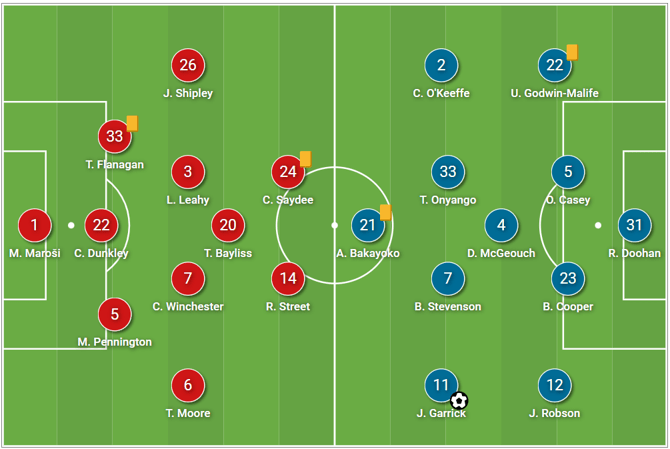
Brandon Cooper, on loan from Championship outfit Swansea City, lined up alongside Oliver Casey in the heart of the back four, with defensive protection from midfield being provided by Dylan McGeouch. Ahead of McGeouch was Ben Stevenson and Everton loanee Tyler Onyango, with wide support being provided by Jordan Garrick and Corey O’Keeffe. New signing Amadou Bakayoko, who played the target man role in this fixture, was the lone striker.
Attacking: Target man approach and finding space in transition
Ferguson was aware that his side was not going to win the battle for possession against a Shrewsbury side who had won three in a row before this tie, so he knew that moving the ball quickly but with purpose was the only way his side stood a chance in hurting their opponents. Being direct was one part of Forest Green’s tactics going forward, looking to hit Bakayoko in an attempt to bypass the midfield.
Another way in which they made good attacking progress was exploiting spaces, particularly in midfield areas, in the event of a transition – they looked to move the ball forward quickly, often utilising short ground passes rather than direct long balls.
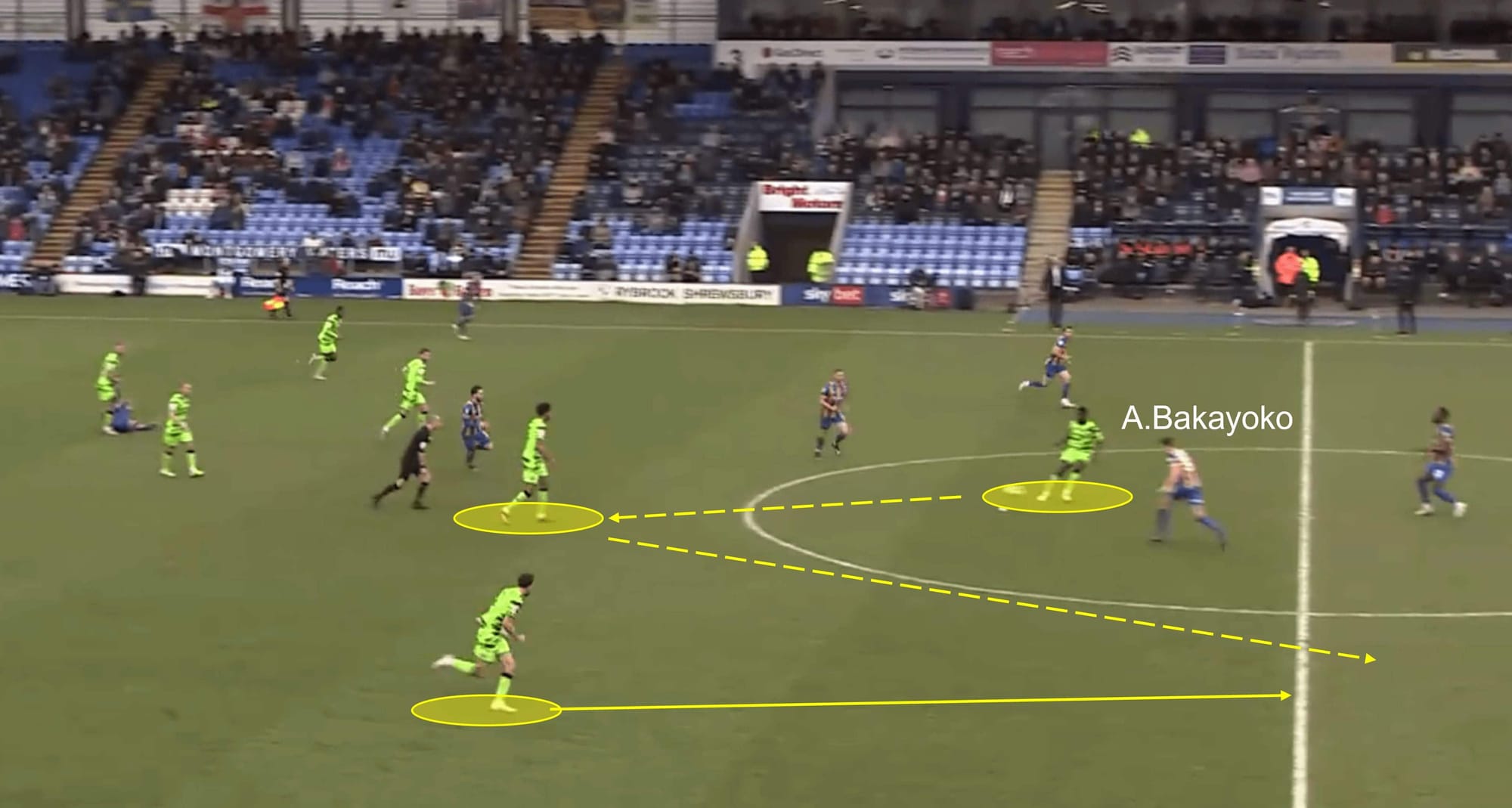
This example encompasses the two attacking components that are up for analysis in this report: the use of a target man, and utilising spaces in transitions. After successfully defending a Shrewsbury attack, Rovers looked to get out of danger and launch an attack of their own. A ground pass from midfield found the feet of Bakayoko, who showed brilliant understanding of his role by dropping in deeper to become available, before playing a first-time pass back to his midfield teammate.
While this was unfolding, another teammate recognised the space ahead of him and made a run towards it, with Onyango demonstrating good awareness and pass execution to find the wide man. This sort of quick-thinking link-up play in transition can be a very effective way of picking teams apart when they give the ball away, as the long direct ball usually has a very low chance of succeeding.

This image provides some more insight into the type of player Forest Green have in Bakayoko. His heatmap of the season, which does include data from his performances prior to his move to Forest Green, at Bolton, shows us that he is no stranger to coming into the midfield third to lend a helping hand to his teammates.
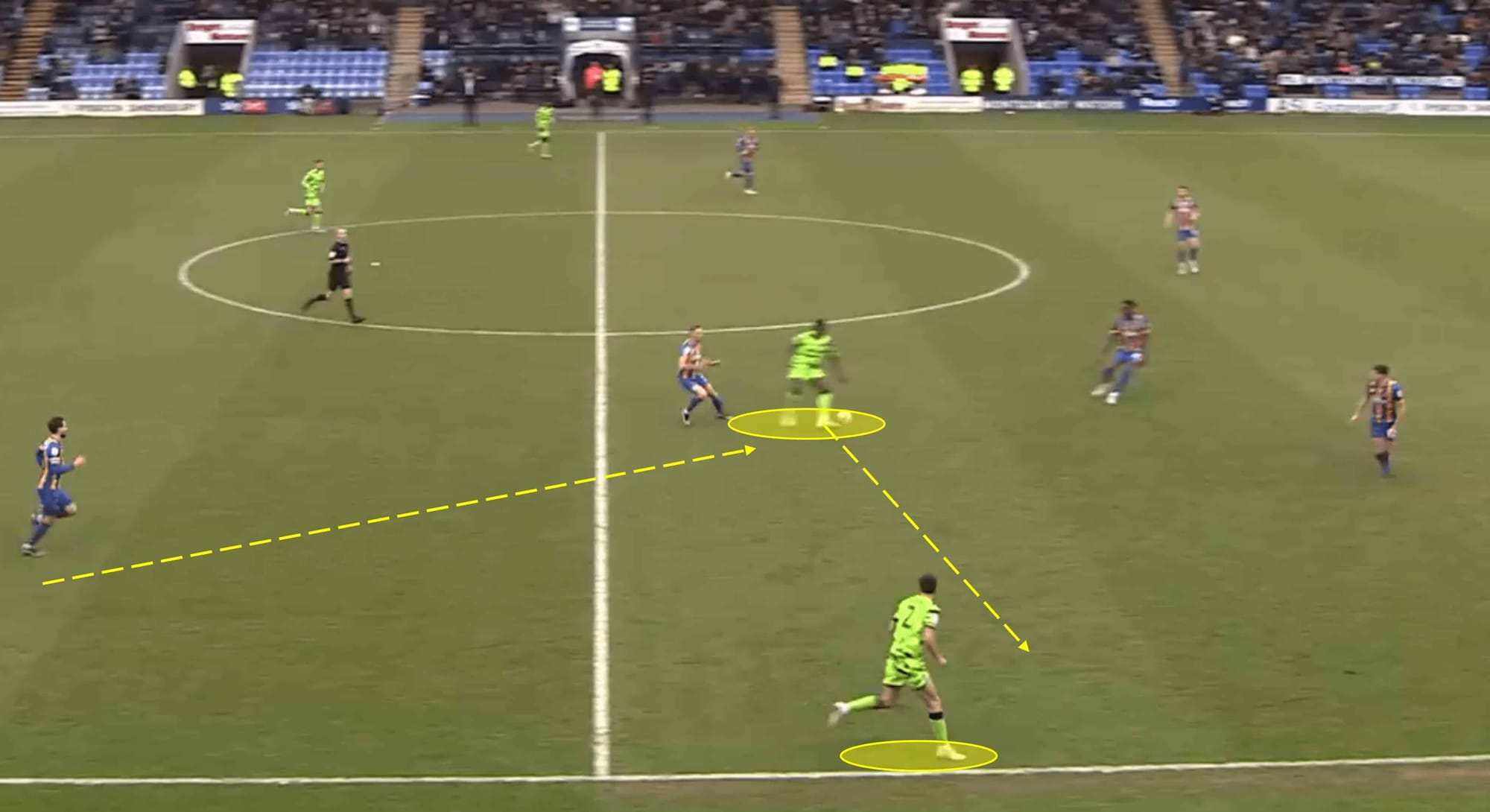
Bakayoko is involved again in a similar way to the previous analysis, but the focus this time lies on how Forest Green progressed through the thirds amid a transition. The forward received a pass from his own half, beating an opponent to the ball as he bounced a first-time pass out wide to the supporting Udoka Godwin-Malife. The right-back showed his ability to get up and down the flank on numerous occasions and proved to be a valuable asset in building attacks/maintaining possession.
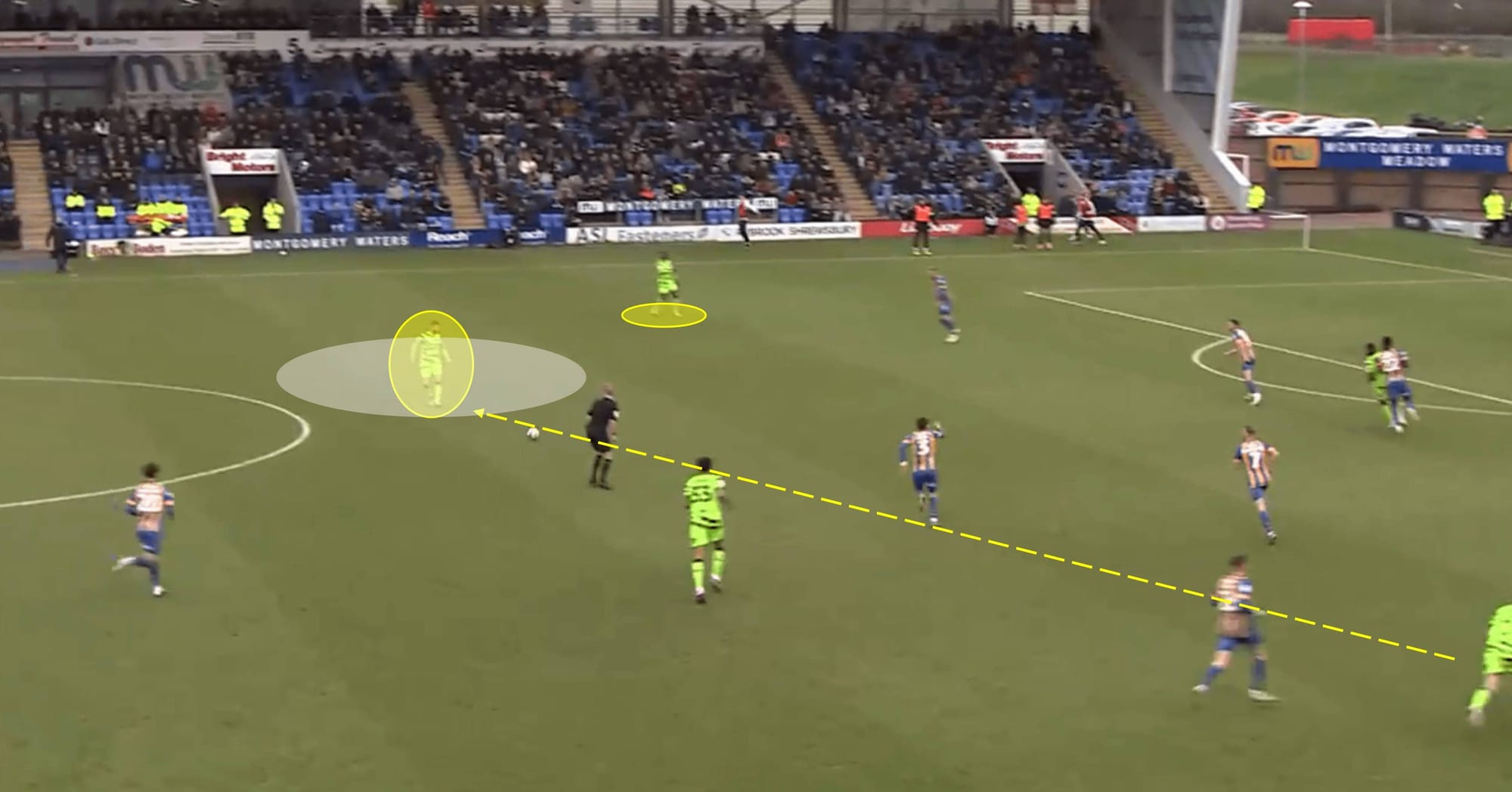
While Forest Green sometimes looked to be a little cautious in their possession, for the most part, their tactics centred around moving the ball quickly, either forward to feet or laterally into a player in space. The image above is how the previous image unfolded, with Godwin-Malife displaying good passing attributes to pick out Stevenson alone in the middle of the park. Stevenson picked the ball up from this sort of area on more than one occasion, and he would look to either drive forward towards the box or play a quick pass out to his teammate on the flank.
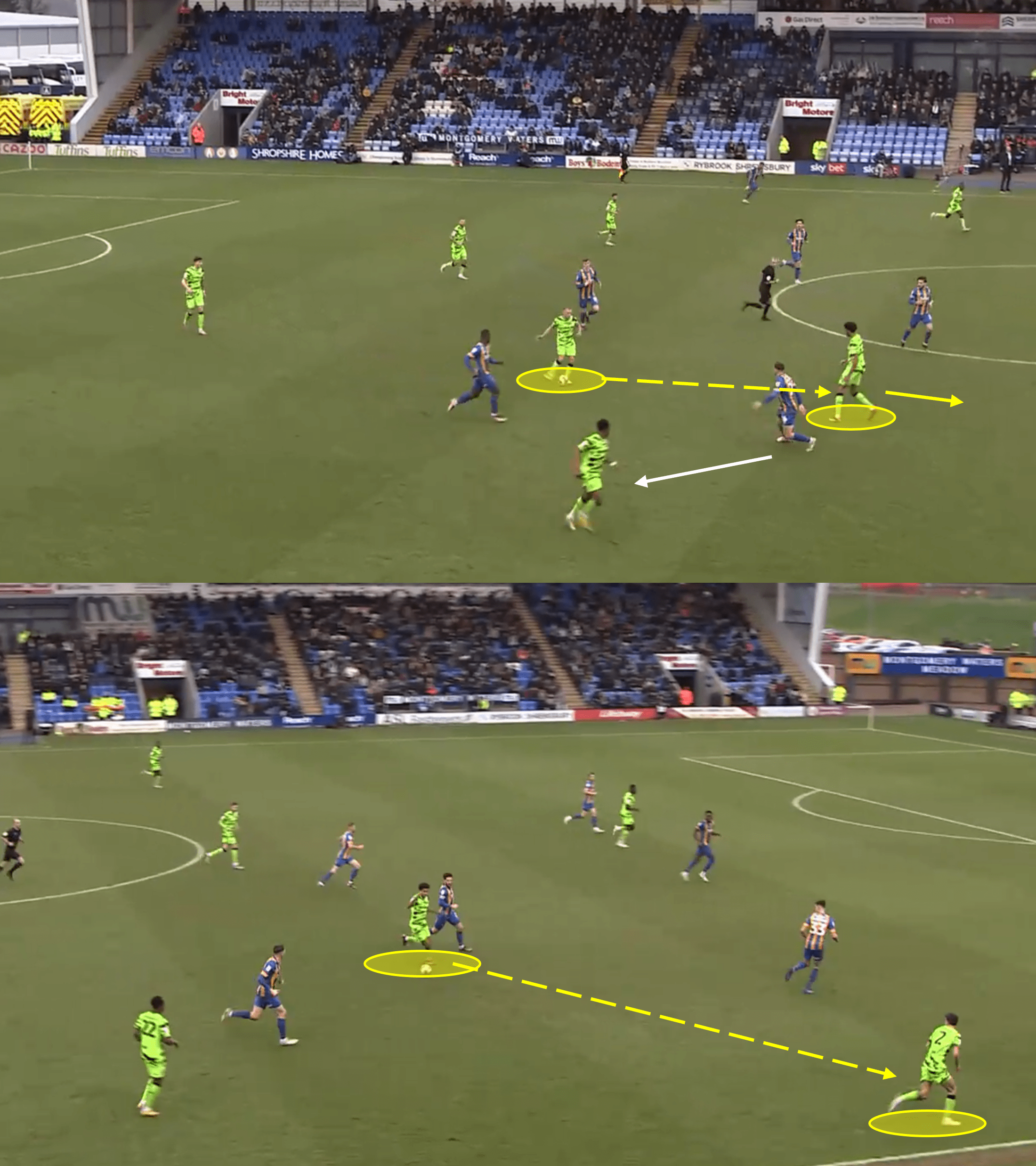
Here we have another look at how Forest Green look to move through the midfield zones in a transition, and there is a pattern emerging – they seem to begin the transitional move in central zones before shifting the ball out to the full-back who is keen to join the attack. They also looked stronger when executing this down the right flank as they would sometimes cut the possession inside and shift the ball to the opposite flank later in the move.
Onyango had a really impressive showing, displaying good intensity on and off the ball, as well as demonstrating decent physical attributes that allow him to be effective in duels. In this example, he uses good movement and acceleration to receive the ball in space before driving forward as his team look to enter the final third. He then utilises the support from Godwin-Malife again, who also showed a good understanding of Ferguson’s tactics.
Defensive concerns
As we mentioned earlier on, Forest Green currently have the worst defensive record in the entire division, conceding 55 goals so far. And while it looked as though they were going to steal a clean sheet in this fixture, there were still some warning signs that all was not too well in the defensive ranks.
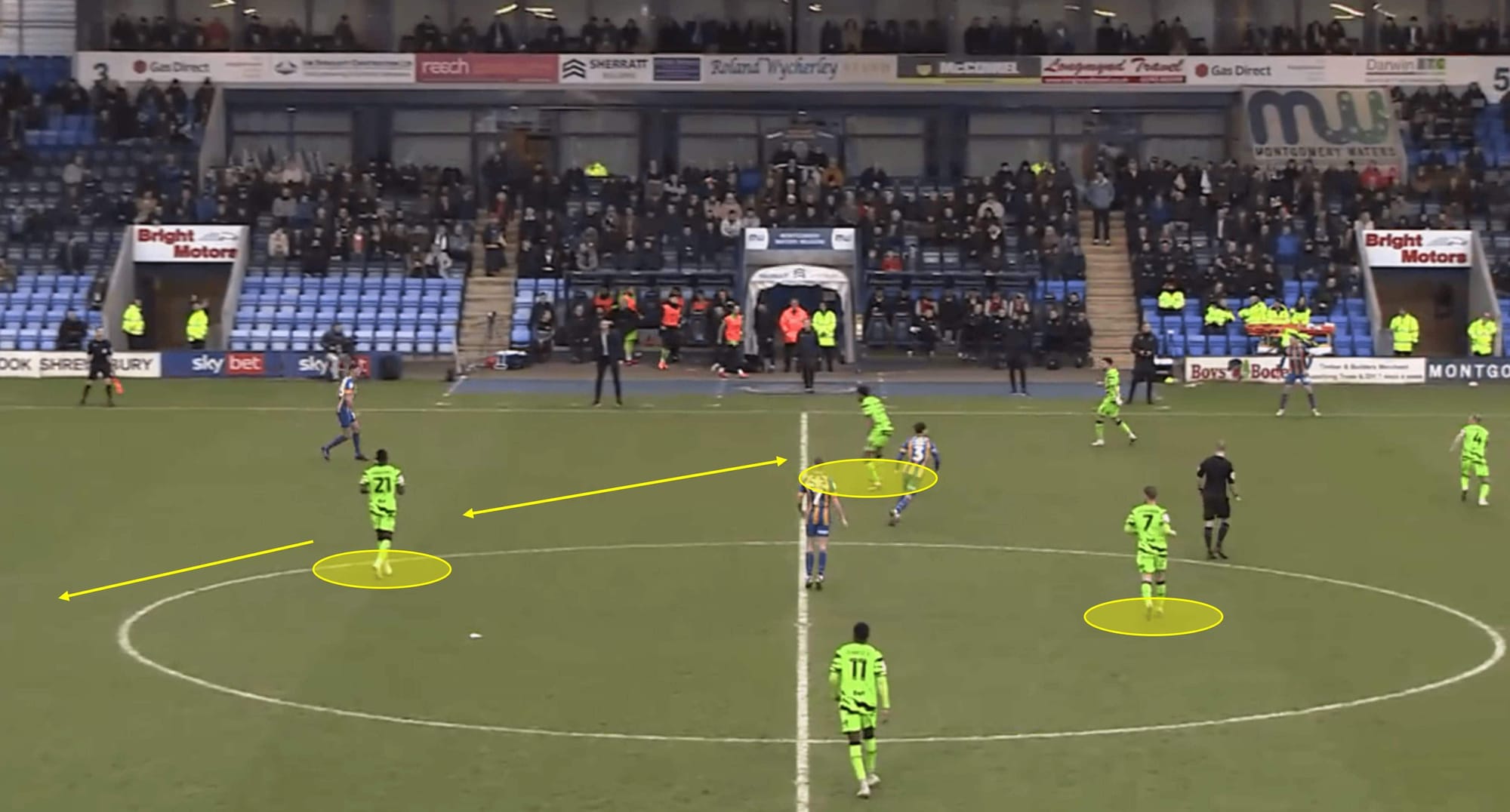
While it would be inaccurate to claim that Forest Green parked the bus for 90 minutes, there were certainly spells in the game that saw them soak up the pressure. And while this looked to be part of their tactics, there are questions about their press, which looked good in some situations, but non-existent elsewhere.
If Rovers triggered a press, it was usually as Shrewsbury looked to penetrate the midfield third, with Forest Green swarming the ball with multiple players. However, when they simply looked to set up in a defensive fashion, they often only succeeded in inviting pressure with poor positioning. Yes, there could be questions about the shape of the midfield four as a unit, but let’s focus on individual positioning.
Bakayoko, who wasn’t exactly applying high-intensity pressure, was often seen in no man’s land with plenty of space between him and his midfield teammates. Meanwhile, the two highlighted Rovers players in the midfield unit don’t seem to be on the same page either – too much distance between them both and the depth between them was inconsistent too. This all invited Shrewsbury forward, and the hosts could have played their way through the Rovers midfield on this occasion.
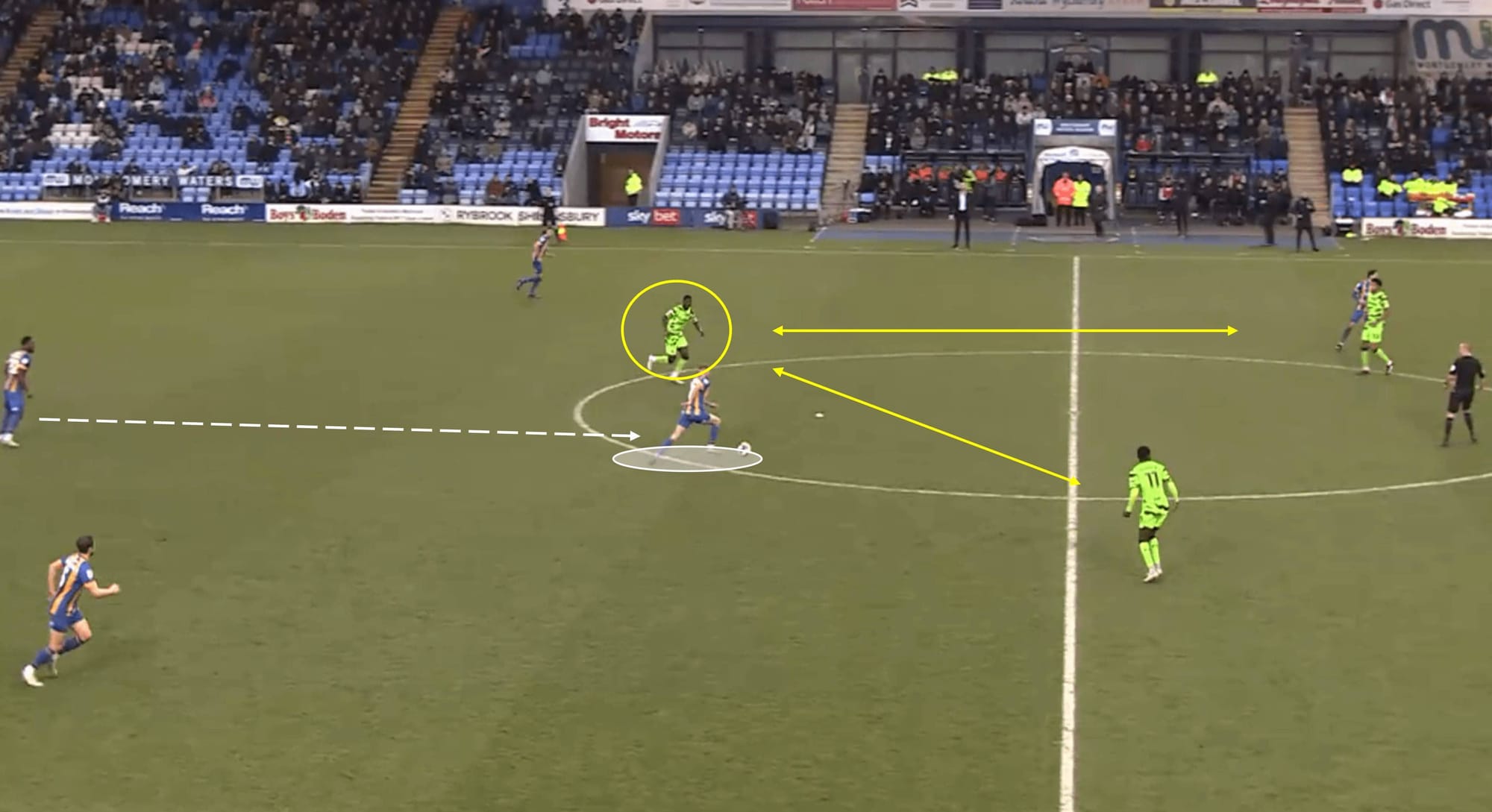
This analysis highlights how Bakayoko’s high positioning (in comparison to the midfield) can be detrimental to his side. The Shrewsbury midfielder dropped in to receive the ball and has a fair amount of space to work within. It may be unfair to criticise Bakayoko for not being tighter on him, but had he been deeper and closer to his midfield, it would have given the opponent less space in front of him, making him rush his next action more.
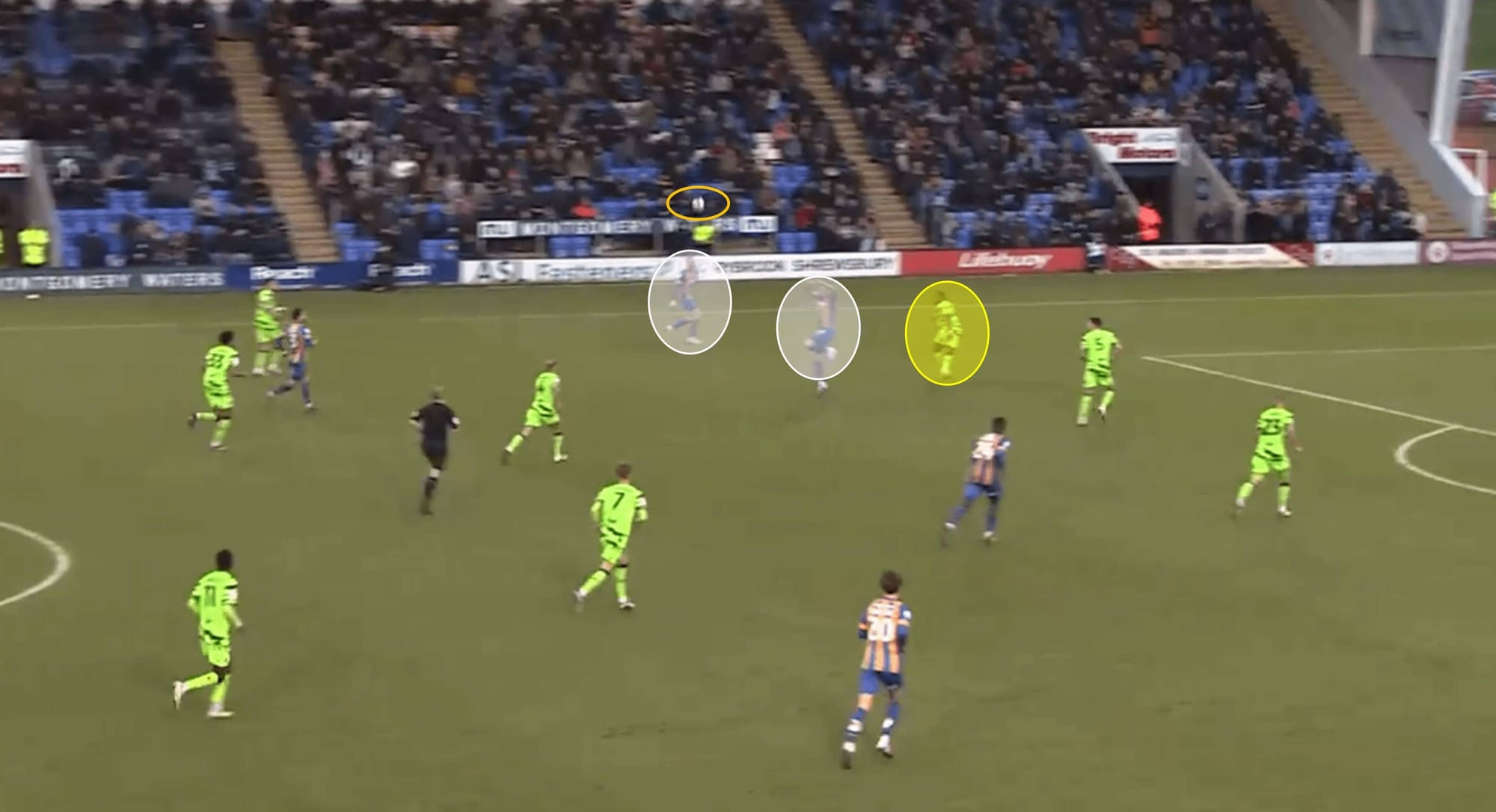
This long ball from Shrewsbury came from the same move as the previous analysis and highlights a pattern of the hosts’ play – long diagonal balls with an attempt to double-up on the full-back, making it a 2v1 scenario. While Shrewsbury didn’t have much direct success from this, it did get them up the pitch quickly at times, and Forest Green seemed to fail to recognise it as it happened on multiple occasions. Ultimately, they got away with it this time but it could have been very costly.
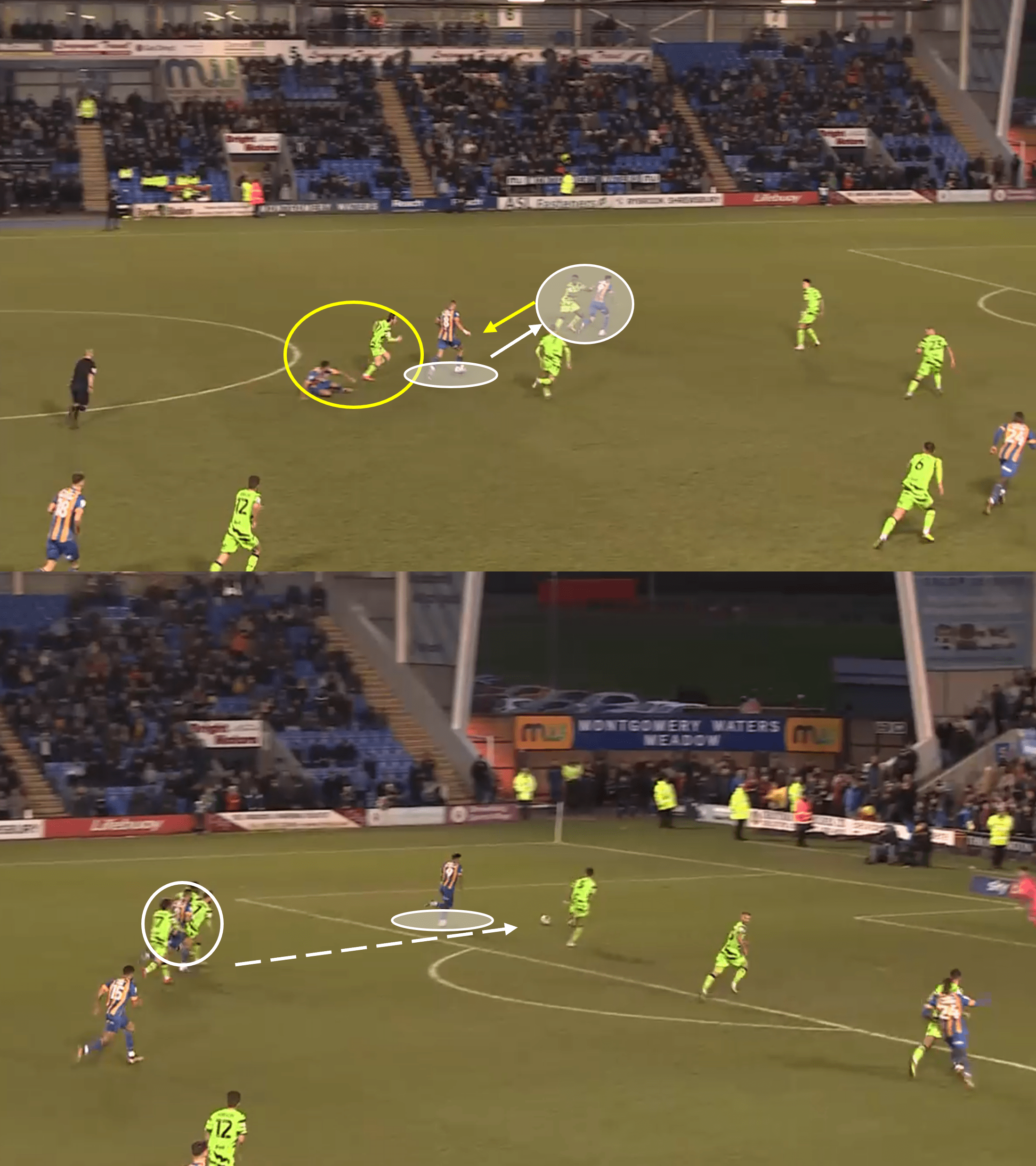
Shrewsbury’s winning goal, from a Forest Green perspective, was avoidable. The move starts as the circled Rovers player loses his duel in a vital midfield area, allowing Shrewsbury to collect the ball and drive into the final third. And this is where Godwin-Malife lacked the judgement to defend effectively, as the full-back felt the need to rush out to the opponent on the ball to close him down, only this gave Ryan Bowman space behind him as the through ball was executed. Despite the best efforts of Casey to get across and block Bowman’s view on goal, the Shrewsbury man coolly dispatched the ball to grab a 98th-minute winner.
Conclusion
Duncan Ferguson went on record to say he was encouraged by what he saw in his first game as Forest Green Rovers boss, and he has a right to be. His side showed good signs in attack, looking particularly dangerous breaking through the thirds in transition. Furthermore, the addition of Bakayoko in the attack will likely be vital to Rovers’ survival bid, and looks like will fit into Ferguson’s plans nicely.
Unsurprisingly, they let themselves down defensively – their issues off the ball weren’t going to disappear overnight, and Ferguson has his work cut out in mending things at the back and restoring confidence and quality in the ranks.
At the time of writing, Forest Green sit four points from safety, so they aren’t out of the fight yet at all, but they need to start picking positive results up.

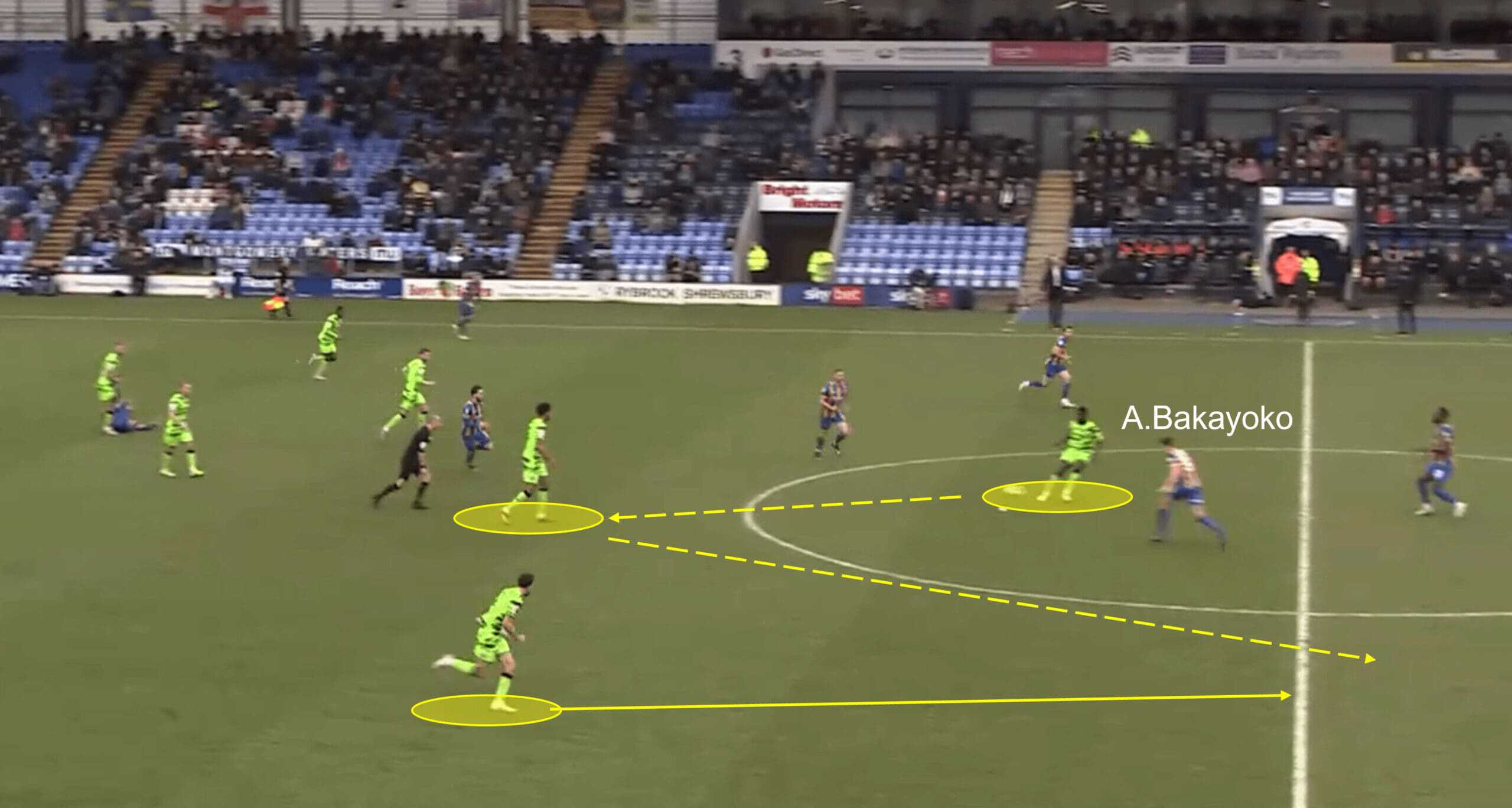




Comments